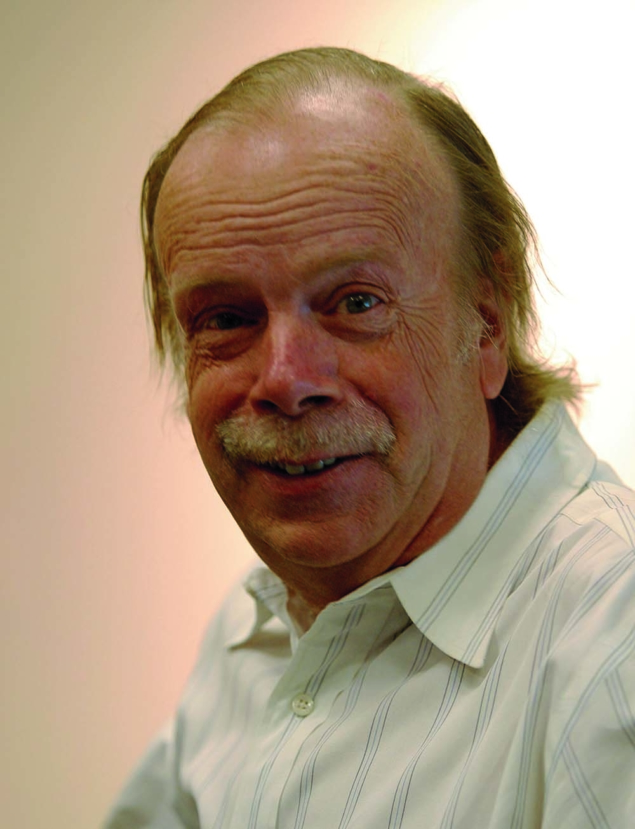
Paul Kunz, who revolutionised particle-physics computing and established the first Web server in the US, passed away on 12 September.
After completing a PhD in physics at Princeton University, Kunz began his illustrious 35 year-long career at the Stanford Linear Accelerator Center (SLAC) in 1974 as a research associate in David Leith’s experimental physics Group B. As well as being an accomplished particle physicist, he quickly took an interest in one of the computing challenges facing experiments at the time – how to increase offline data-processing capability at a reasonable cost.
Using his deep understanding of computer architecture, software and hardware, he proposed a novel solution well beyond the norms of the time: the construction of a “farm” of interconnected processors each capable of executing IBM 370/168 instructions generated from standard FORTRAN code by an intermediate translator. In effect, the collection of interconnected computers in the farm would emulate, at a much lower cost, a single mainframe, distributing tasks to the individual processors, which became known as emulators. Each emulator would process entire events from particle interactions. Thus a simple parallel processing algorithm that did not require special programming or intricate modification to an experiment’s existing software was born.
After forming a small team at SLAC and building a prototype emulator known as the 168/E, Paul met CERN computer specialists David Lord and Adolfo Fucci. They immediately expressed a desire to join forces. In fact, they were looking for an online filter processor that would execute standard offline FORTRAN code to make a selection of events for fast analysis by CERN’s UA1 experiment, the so-called express line. Exhibiting his usual selfless interest in sharing ideas, Paul agreed to join forces, thereby establishing one of the first “real time” intercontinental collaborations by using the European Academic Research Network (EARN) and BITNET, courtesy of IBM.
The CERN/SLAC collaboration successfully constructed offline processing farms, notably for UA1. In parallel, one of the members of Paul’s original team, Hanoch Brafman, went on to build a complementary 370/E emulator at the Weizmann Institute of Science in Israel. Subsequently, the CERN/SLAC teams developed the next-generation emulator, the 3081/E, which was used by UA1 and the Large Electron–Positron Collider (LEP) experiments in online and offline environments. The farms were inherently extendable by simply adding processors, and are arguably the inspiration for today’s distributed offline computing facilities. The success of the emulator-based UA1 third-level trigger facility pioneered the use of a processor farm for the so-called high-level trigger system, which has since been employed by most collider experiments (at LEP, the Tevatron and the LHC), albeit with commercial processors.
In the 1990s, Paul turned his attention to the challenges of software development and became a guru and advocator of object-oriented programming. He was a passionate user of Steve Job’s NeXT computer and on an historic visit to CERN where he had regularly been giving courses on C++ programming, Paul immediately recognised the potential of the Web as demonstrated by Tim Berners-Lee and Robert Cailliau. Returning to SLAC, Paul not only installed the software on his NeXT, thereby establishing the first Web server in the US, he also connected it to the SPIRES database, giving the Web development team a “killer app”, which demonstrated the huge potential of their project.
In his personal life, Paul was a champion BMW autocross driver and president of the Bay Area BMW club, at which he was also, along with his wife, a driving instructor for teenagers. When travelling to CERN, he would often land in Frankfurt, hire a BMW, and take it for a spin round the Nuremberg ring. He loved Chinese food and liked nothing better than to enjoy dinner in one of the many Chinese restaurants in the SLAC area with visiting friends and colleagues, often speaking French with his unique accent, a legacy of time spent at CEA Saclay in the 1970s.
Paul Kunz was a computing visionary and pioneer, and a great communicator who loved to share his ideas with irrepressible energy.
Thank you for all the bytes and bites, Paul.





